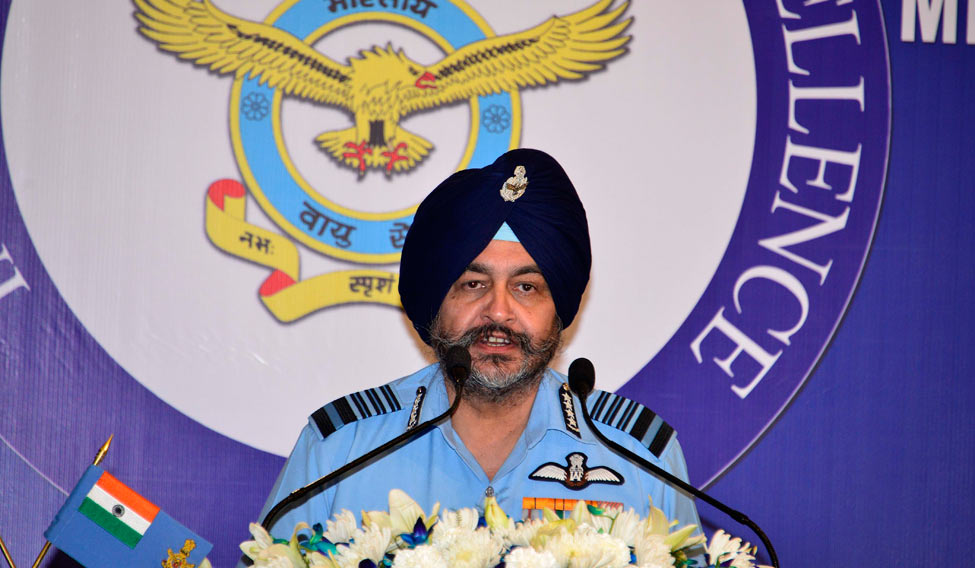Ever since the Doklam standoff was defused on August 28, the Indian and Chinese troops are no longer in a physical face off, but the presence of Chinese troops is still there in the Chumbi valley, said Air Chief Marshal B.S. Dhanoa at the annual press conference in New Delhi on Thursday. This is the first statement on the presence of Chinese troops post the stand off from the military. Although off record, officials have said that China has not de escalated the site, there was no statement from either the army or the air force so far.
The air chief said that he expected China to withdraw its forces as their exercise got over. He also felt that diplomatic channels were hard at work to ensure that peace would continue at the site.
The Doklam standoff lasted 70 days and took heavy duty diplomatic efforts for it to be defused without firing a bullet. At the time the stand off was called off, China had, in a cryptic communique, stated that India was withdrawing its troops from the tri-junction, and made no mention of its own troop movement. Critics put several explanations forward. Some said that since India had advanced its troops, it was obvious India would have to pull them back. Others noted that China had very smartly not mentioned what its plans with its own troops were.
India has the advantage of height in the region and has a round the year military presence there. China, however, withdraws its army once winter begins.
Dhanoa said that whenever there was a high alert scenario, the air force was always on stand by, just in case something went wrong. “As compared to Chumar, we were closer to our position in Doklam, so air support was not required.'' He noted that throughout the 70 days, the air power on both sides remained well within their boundary. There was no violation of air space on either side.
The India Air Force will observe its 85th anniversary on October 8. Speaking about the air force's capabilities, the chief said that it was capable of of locating and striking targets in case an enemy country launched a nuclear strike. “We have a draft nuclear doctrine on what to do if the enemy uses nuclear weapons. We have the capability to locate and strike such targets,'' he said.
Dhanoa re-asserted that the air force required 42 squadrons to be able to utilise the full spectrum of its capabilities in case of a two-front war. He said the air force was augmenting its fleet, but with older squadrons getting decommissioned, it would be only by 2032 that India would have its 42 squadrons.
“This does not mean we are not capable of handling a two-front war right now. We have a Plan B. As against Pakistan, our capability is adequate. With respect to China, it is not what China has, but what it can get into Tibet that really matters. And our capability is adequate for that.'' The chief mentioned that in the current geo-political situation, the possibility of a two front war seemed low. “But the response has to be on the enemy's capabilities as the intention of the enemy can change overnight,” he said.
Though women have been kept out of combat roles in the military for long, and the air force made a start only last year with training three women fighter pilots, the chief said that ``Flying is gender neutral. It is about the aptitude and capabilities.'' He said that the next batch of three women would begin training as fighter pilots even as the first batch got commissioned later this year. Inducting women as fighter pilots was a five year experiment undertaken by the ministry of defence. Dhanoa said after five years, they would take a further call on what to do.
Speaking on strengthening fleet capacity and capability, he said that several of the 80s vintage squadrons were being fitted with upgraded avionics, even as the 36 Rafales and 30 Sukhois would start getting inducted into the force from 2019 onwards. Rustom 2 and Ghatak, the unmanned aerial vehicles (the latter a combat one) developed by DRDO would also shortly join the force. Noting that singe engine craft were more cost effective and thus, the air force was augmenting its fleet with these, the chief made it clear that in future, India's requirement would be for twin engine craft.
Dhanoa said that while it was impossible to say when and where the next fidayeen attack could take place, the air force was working on having a better Quick Response Team (QRT) in place, so that another Pathankot would not happen.
He said that while there was a lot of planning for acquiring bullet resistant QRT vehicles and to have an integrated perimeter security system, it was the training of personnel that was more crucial. “Earlier, they were trained for guard duties, we have now trained over six thousand air warriors for QRT inside air force stations. We have got good surveillance assets for them. They need high calibre weapons to kill rather than injure the attacker.''





